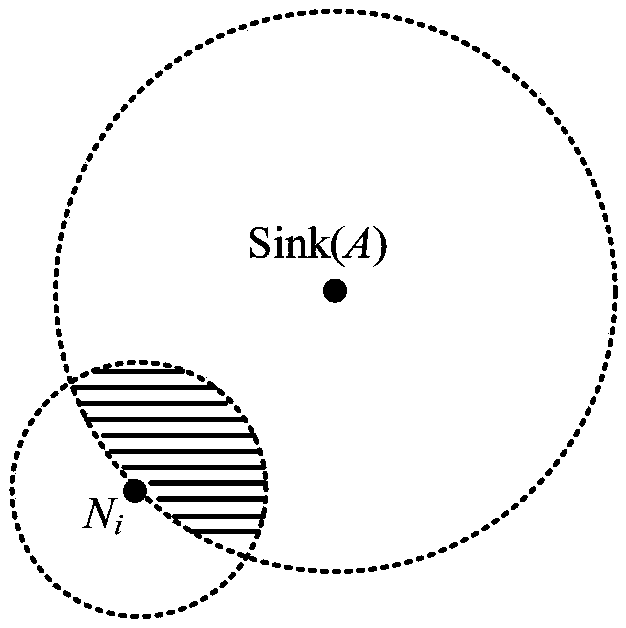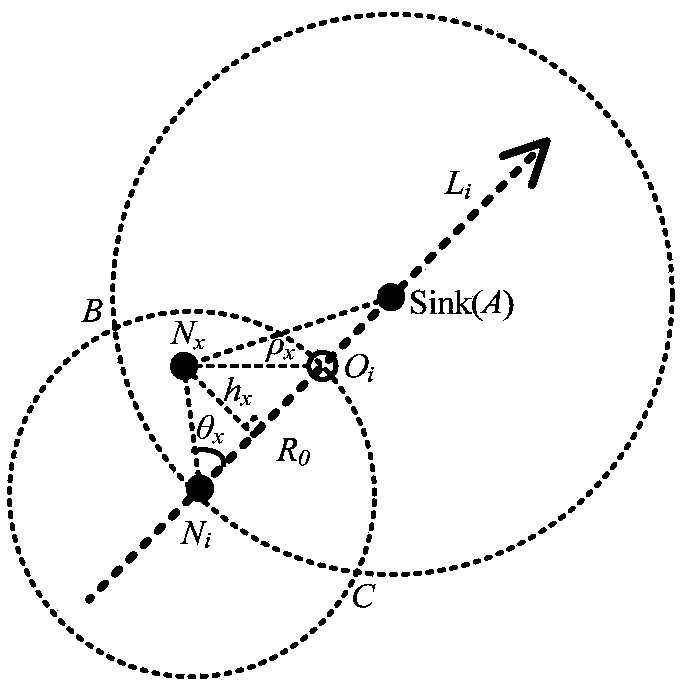Wireless sensor network node autonomous decision-making routing protocol
A wireless sensor and sensor node technology, applied in network topology, wireless communication, data exchange network, etc., can solve the problem of uneven energy consumption of nodes in each district
- Summary
- Abstract
- Description
- Claims
- Application Information
AI Technical Summary
Problems solved by technology
Method used
Image
Examples
Embodiment Construction
[0059] The present invention provides a wireless sensor network node autonomous decision routing protocol (Node Autonomous Decision routing protocol, NAD), the protocol includes the following steps:
[0060] Step 1: Network initialization: the sink node broadcasts MSG_ADV message to all sensor nodes to start network operation; all sensor nodes receive the MSG_ADV message broadcast by the sink node, and calculate the distance from the sink node according to the RSSI received signal strength;
[0061] Step 2: Neighbor discovery: All nodes broadcast MSG_HELLO messages to their neighbor nodes with the initial communication radius for neighbor discovery, the message contains the distance between the node itself and the Sink node; all sensor nodes receive the MSG_HELLO messages broadcast by their neighbor nodes, and receive signals according to RSSI Intensity calculates the distance from neighbor nodes and creates a neighbor node information table;
[0062] Step 3: Establish a virtu...
PUM
 Login to View More
Login to View More Abstract
Description
Claims
Application Information
 Login to View More
Login to View More - R&D
- Intellectual Property
- Life Sciences
- Materials
- Tech Scout
- Unparalleled Data Quality
- Higher Quality Content
- 60% Fewer Hallucinations
Browse by: Latest US Patents, China's latest patents, Technical Efficacy Thesaurus, Application Domain, Technology Topic, Popular Technical Reports.
© 2025 PatSnap. All rights reserved.Legal|Privacy policy|Modern Slavery Act Transparency Statement|Sitemap|About US| Contact US: help@patsnap.com



